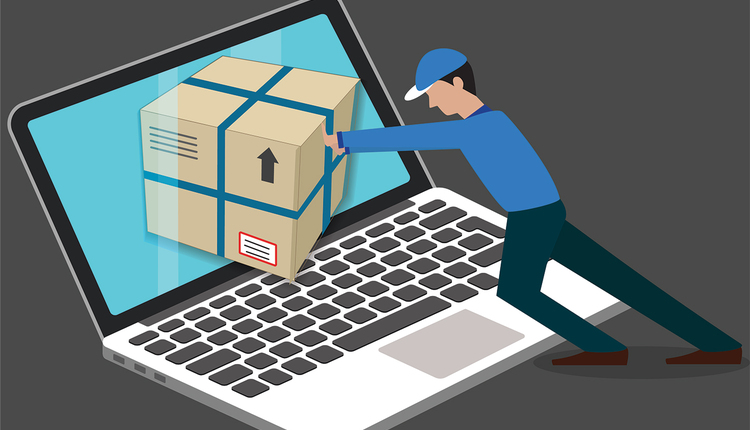We often get requests from our customers to evaluate how Zone Skipping might save them money or improve their shipping times. There is no “one size fits all” answer. Stated differently, “It all depends.”
Let’s start with a quick definition. Zone Skipping is a logistics technique whereby a shipper consolidates many individual packages or orders. These individual packages are held and aggregated until the quantity reaches a full truckload (in some cases LTL works, too). These packages are sent in mass from one area, like the East Coast, to another area, like the West Coast. Upon arrival at a sorting facility, the packages complete their journey to the final destination. For example, Atlanta is in Zone 2. Los Angeles is in Zone 8. Shipping directly from Zone 2 to Zone 8 via consolidated truckload is considered Zone Skipping.
Zone Skipping can be advantageous by lowering the per package price for shipping. Instead of shipping individual packages across various zones, one truckload is shipped. It is easy to do the math and determine the potential savings . These savings can accrue to the shipper, the marketer or the end user.
Here’s the math for one example: shipping 3000 l packages from Georgia to California @ $10 each equals $30,000 in shipping costs. Compare this to one truckload of 3000 orders shipped from Georgia to the carrier’s sorting facility in California @ $3,000. Then add the cost of parcel shipping (from the carrier’s facility to the customer – all within zone 2) @ $7 each. $3000 + (3,000 x $7) equals $24,000. In this example, the savings equal $6,000 ($30,000 vs. $24,000).
Also, using full truckload service can reduce transit time. For example, a truckload driven by a team can make the trip from Georgia to California in 2 days. Add a day for the parcel carrier to deliver and you’ve shortened the delivery time to your customer to just 3 days, down from 4 or 5.
The major disadvantage to Zone Skipping is at the front end. Instead of shipping the order immediately upon receiving it, the order is held until there is enough volume for the truckload (or LTL in some cases). If order volume is low or unpredictable, then waiting for a critical mass for Zone Skipping can be disastrous.
The other model is to ship each order separately. With this method the order gets out the door and starts the journey as quickly as possible, traveling uninterrupted to the final destination.
The best of both worlds utilizes both methods Ship individual packages whre total package volume to an area is small. Also, when it is important to get the packages shipped out quickly. Use Zone Skipping when you have high volumes allowing you to benefit from a truckload price versus individual package prices. And when the transit time can be decreased due to the consolidated long hual shipment.
In today’s marketplace, consumers demand that their orders arrive quickly. This can be accomplished best by processing orders in real time, shipping same day and using expedited shipping methods as necessary. As shippers satisfy their customers’ demands for speed, then they can analyze alternative methods to further improve speed and/or reduce costs.
About a2b Fulfillment
Based in Greensboro, GA, a2b Fulfillment offers a strategic location for economical warehousing and logistics services. The Southeast US location allows for faster delivery and lower overall freight costs for a national shipping program. Canadian fulfillment is provided through our Toronto warehouse. In total the company offers over 450,000 square feet of warehouse and call center space. Warehousing, Climate Controlled Warehousing, Order Fulfillment, Order Management, Customer Service, and Returns Processing / Refurbishment programs are available on both Business to Business and Direct-to-Consumer platforms. a2b Fulfillment is an active member of the Greene County and Eatonton-Putnam County Chambers. For more information, please visit www.a2bf.com.
Let’s start with a quick definition. Zone Skipping is a logistics technique whereby a shipper consolidates many individual packages or orders. These individual packages are held and aggregated until the quantity reaches a full truckload (in some cases LTL works, too). These packages are sent in mass from one area, like the East Coast, to another area, like the West Coast. Upon arrival at a sorting facility, the packages complete their journey to the final destination. For example, Atlanta is in Zone 2. Los Angeles is in Zone 8. Shipping directly from Zone 2 to Zone 8 via consolidated truckload is considered Zone Skipping.
Zone Skipping can be advantageous by lowering the per package price for shipping. Instead of shipping individual packages across various zones, one truckload is shipped. It is easy to do the math and determine the potential savings . These savings can accrue to the shipper, the marketer or the end user.
Here’s the math for one example: shipping 3000 l packages from Georgia to California @ $10 each equals $30,000 in shipping costs. Compare this to one truckload of 3000 orders shipped from Georgia to the carrier’s sorting facility in California @ $3,000. Then add the cost of parcel shipping (from the carrier’s facility to the customer – all within zone 2) @ $7 each. $3000 + (3,000 x $7) equals $24,000. In this example, the savings equal $6,000 ($30,000 vs. $24,000).
Also, using full truckload service can reduce transit time. For example, a truckload driven by a team can make the trip from Georgia to California in 2 days. Add a day for the parcel carrier to deliver and you’ve shortened the delivery time to your customer to just 3 days, down from 4 or 5.
The major disadvantage to Zone Skipping is at the front end. Instead of shipping the order immediately upon receiving it, the order is held until there is enough volume for the truckload (or LTL in some cases). If order volume is low or unpredictable, then waiting for a critical mass for Zone Skipping can be disastrous.
The other model is to ship each order separately. With this method the order gets out the door and starts the journey as quickly as possible, traveling uninterrupted to the final destination.
The best of both worlds utilizes both methods Ship individual packages whre total package volume to an area is small. Also, when it is important to get the packages shipped out quickly. Use Zone Skipping when you have high volumes allowing you to benefit from a truckload price versus individual package prices. And when the transit time can be decreased due to the consolidated long hual shipment.
In today’s marketplace, consumers demand that their orders arrive quickly. This can be accomplished best by processing orders in real time, shipping same day and using expedited shipping methods as necessary. As shippers satisfy their customers’ demands for speed, then they can analyze alternative methods to further improve speed and/or reduce costs.
About a2b Fulfillment
Based in Greensboro, GA, a2b Fulfillment offers a strategic location for economical warehousing and logistics services. The Southeast US location allows for faster delivery and lower overall freight costs for a national shipping program. Canadian fulfillment is provided through our Toronto warehouse. In total the company offers over 450,000 square feet of warehouse and call center space. Warehousing, Climate Controlled Warehousing, Order Fulfillment, Order Management, Customer Service, and Returns Processing / Refurbishment programs are available on both Business to Business and Direct-to-Consumer platforms. a2b Fulfillment is an active member of the Greene County and Eatonton-Putnam County Chambers. For more information, please visit www.a2bf.com.







